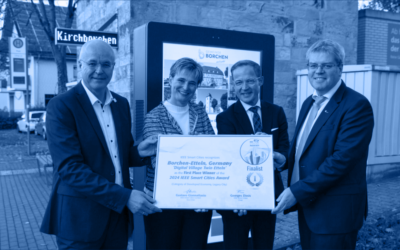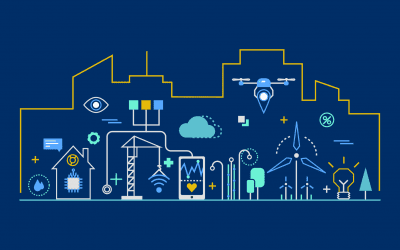Created with our Media Partner Robert Brears (Founder of Our Future Water, Editor-in-Chief of the Palgrave Handbook of Climate Resilient Societies, renowned author, and contributing author for the World Bank’s Water Blog, Asian Development Bank’s Blog, United Nations Industrial Development Organization’s Making It Magazine, as well as the Green Growth Knowledge Platform), this white paper features use cases from the FIWARE Community: EGM, HOPU, Promálaga, Red Hat, SCOREwater, Snap4City, Uni Systems, and VM9, showcasing how they are implementing smart technologies that create future cities.
“Over the next pages, some members of the FIWARE Community, namely Franck Le Gall, Philippe Cousin, Andrea Gómez, Antonio Jara, Francisco Salas, Jim Craig, Pieter De Jong, Paolo Nesi, Spiros Mazarakis, Laura Machado and Marcos Marconi, elaborate on how FIWARE has become a leading voice in establishing the fundamental context management standards needed for the creation of interoperable platforms and digital infrastructures. The stories featured below are just some of the many practical examples of how FIWARE is helping cities to deliver their digital strategy and drive the advancement of an information society, in turn, leading cities into the smart digital future. We are delighted to be sharing this with you today” – Cristina Brandtstetter, FIWARE Foundation CMO.
Besides being shared within FIWARE’s extended network, Our Future Water will be sharing the white paper through its knowledge partnerships with the World Bank’s Connect4Climate initiative, the UNFCCC’s Paris Committee on Capacity-building Network and the OECD/UNEP/World Bank/UNIDO’s Green Growth Knowledge Platform.
We could not be happier to release it shortly before our FIWARE Water DAY. Why? This thought-leadership white paper informs relevant audiences of the latest strategies and innovations regarding how to create smart, resilient, inclusive, and sustainable cities. It provides readers with an understanding of the key trends that are driving the need to create future cities using a range of smart technologies to enhance resource efficiency, improve liveability, and increase resilience to climate change. And water has a lot to do with it.
As Robert Brears states, “optimising water distribution systems, encouraging water conservation, and developing green infrastructure for stormwater management ensure we manage our precious water wisely while creating liveable cities.”



